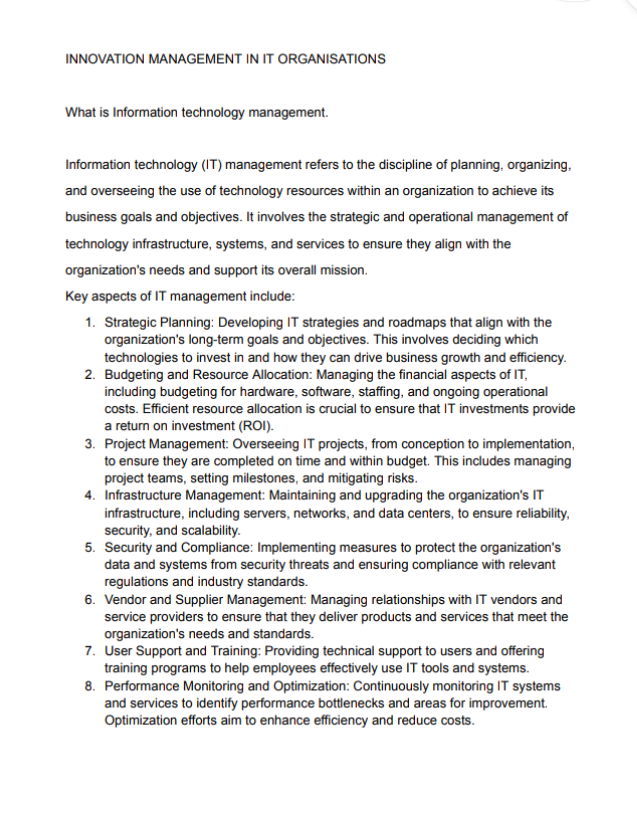Innovation in IT Organizations (Grade A)
Summary:
The PDF titled “Innovation in IT Organizations” provides an exhaustive overview of the role and significance of IT management in modern organizations. It begins by defining IT management as the discipline that involves planning, organizing, and overseeing technology resources to align with an organization’s business goals. The document outlines key aspects of IT management, such as strategic planning, budgeting, project management, infrastructure maintenance, cybersecurity, and vendor management. It emphasizes that effective IT management is crucial for leveraging technology as a strategic asset, improving operational efficiency, and mitigating risks.
The paper also discusses why IT management is essential, highlighting its role in strategic alignment, operational efficiency, risk management, and innovation. It elaborates on various functions like disaster recovery, IT governance, and performance monitoring. The document also touches upon the positive and negative aspects, stating that while IT can enhance efficiency, global connectivity, and customer experience, it poses challenges like security risks, privacy concerns, and job displacement.
Excerpt:
Innovation in IT Organizations
What is Information technology management?
Information technology (IT) management refers to planning, organizing, and overseeing the use of technology resources within an organization to achieve its business goals and objectives. It involves the strategic and operational management of technology infrastructure, systems, and services to ensure they align with the organization’s needs and support its overall mission.
Key aspects of IT management include:
1. Strategic Planning: Developing IT strategies and roadmaps that align with the organization’s long-term goals and objectives. This involves deciding which technologies to invest in and how they can drive business growth and efficiency.
2. Budgeting and Resource Allocation: Managing the financial aspects of IT, including budgeting for hardware, software, staffing, and ongoing operational costs. Efficient resource allocation is crucial to ensure that IT investments provide a return on investment (ROI).
3. Project Management: Overseeing IT projects, from conception to implementation, to ensure they are completed on time and within budget. This includes managing project teams, setting milestones, and mitigating risks.


Reviews